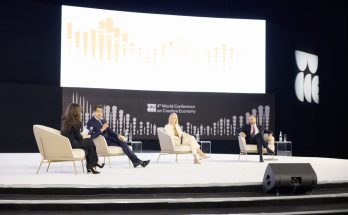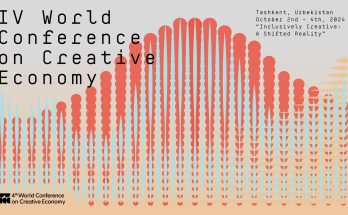[youtube id=”nGCoJoiO1oI” mode=”normal”]It’s been a year of Looking East as well as Acting East for the Indian diplomacy. India’s diplomatic and economic engagement with Southeast Asian and East Asian countries saw a marked upswing in 2014. With India’s Look East policy morphing into Act East policy under the Narendra Modi government, the country’s diplomatic calendar in 2014 is, fittingly, ending with a visit by External Affairs Minister Sushma Swaraj to South Korea, which will focus on intensifying economic ties and injecting greater strategic content into this dynamic relationship.
Sushma Swaraj heads to Seoul: Friction-free Ties
The December 28-30 visit by Sushma Swaraj is also expected to set the stage for a visit by India’s Prime Minister Narendra Modi to Seoul next year. Swaraj has a packed three-day agenda of back-t0-back meetings in Seoul, which includes co-chairing the eight session of Joint Commission Meeting with her Korean counterpart Yun Byung-se. She will also call on President Park Geun-hye and meet senior ministers dealing with trade, defence and industry and energy.
 Ahead of the trip, New Delhi has struck an upbeat note. “India and the Republic of Korea have a friction-free relationship. The external affairs minister’s visit to Seoul is an effort to intensify our exchanges with an important country which we consider crucial to our Act East Policy, and will be actively focused on encouraging Korea to seek investment opportunities in India to manufacture for the Indian market and beyond as part of the Make in India campaign,” says Syed Akbaruddin, spokesperson of India’s external affairs ministry.
Ahead of the trip, New Delhi has struck an upbeat note. “India and the Republic of Korea have a friction-free relationship. The external affairs minister’s visit to Seoul is an effort to intensify our exchanges with an important country which we consider crucial to our Act East Policy, and will be actively focused on encouraging Korea to seek investment opportunities in India to manufacture for the Indian market and beyond as part of the Make in India campaign,” says Syed Akbaruddin, spokesperson of India’s external affairs ministry.
Raising the bar: New Horizons
The visit will focus on enhanced involvement of South Korean companies in building infrastructure in India, including smart cities. On the business front, the two sides are looking to raise the bar as bilateral trade has exceeded $16 billion. The economic ties have been galvanised by the signing of the Comprehensive Economic Partnership Agreement (CEPA), which came into force in 2010.
 Two-way investments are on an upswing, and are expected to move into a higher trajectory, with South Korea emerging as one of the fastest growing OCED countries with a GDP of over $1.5 trillion. Iconic Korean brands like Samsung, Hyundai Motors and LG have made sizeable investments into India, which are estimated to be over $3 billion. Indian investments in South Korea have already exceeded $2 billion. Currently, over 300 Korean firms have set up base in India. The two sides will be exploring the prospects of setting up a Korean Industrial Park in Rajasthan. One can also expect fast-tracking of the multi-billion dollar POSCO Steel Plant and the Port project in Odisha.
Two-way investments are on an upswing, and are expected to move into a higher trajectory, with South Korea emerging as one of the fastest growing OCED countries with a GDP of over $1.5 trillion. Iconic Korean brands like Samsung, Hyundai Motors and LG have made sizeable investments into India, which are estimated to be over $3 billion. Indian investments in South Korea have already exceeded $2 billion. Currently, over 300 Korean firms have set up base in India. The two sides will be exploring the prospects of setting up a Korean Industrial Park in Rajasthan. One can also expect fast-tracking of the multi-billion dollar POSCO Steel Plant and the Port project in Odisha.
The growing strategic comfort in bilateral ties will be reflected in a renewed push to implement the civil nuclear deal the two countries signed in 2011. Unlike Japan, which is still hemmed in by its powerful non-proliferation lobby, South Korea is expected to be more pragmatic and cooperate closely in areas of nuclear safety and research and development. The two sides have “identified research and development, training of India’s scientific personnel, and working together on next-generation reactors,” says Akbaruddin.
From Ayodhya to Strategic Partnership
 The relations between India and South Korea hark back to the twilight realm between history, myth and storytelling. According to a 13th century text, a princess from Ayodhya (Suriratna) came to Korea, married King Kim-Suro, and became Queen Hur Hwang-ok in 48 AD. Many South Koreans, including former first ladies, trace their ancestry to the royal couple.
The relations between India and South Korea hark back to the twilight realm between history, myth and storytelling. According to a 13th century text, a princess from Ayodhya (Suriratna) came to Korea, married King Kim-Suro, and became Queen Hur Hwang-ok in 48 AD. Many South Koreans, including former first ladies, trace their ancestry to the royal couple.
The ancient relations have now effortlessly morphed into a vibrant multi-faceted modern relationship. Culturally and spiritually, Buddhism remains the enduring bond between the two countries. Nobel laureate poet-sage Rabindranath Tagore has acted as a bridge-builder. A bust of Tagore was unveiled in Seoul in May 2011. Yoga’s popularity is surging in South Korea. And Indian dance forms like kathak, Odissi and Bharathanatyam are finding a new following in the East Asian country. Bollywood, with its opulent song-and-dance sequences as well as focus on family values, have a powerful resonance in South Korea. Educational exchanges are on the rise. And people-to-people contacts are growing by the day, with India looming high on Korean tourists’ itinerary, especially after India extended visa-on-arrival facility for Korean tourists from April 15, 2014.
The Road Ahead
 Looking ahead, South Korea, East Asia’s economic dynamo and India, Asia’s third largest economy, are set to come closer in an evolving calculus of win-win opportunities. The two countries are now looking to implement their civil nuclear deal, collaborate in outer space and frontier areas of technology, and are taking a slew of steps to bolster their defence and strategic ties through enhanced joint exercises and maritime cooperation. With the Asia-Pacific theatre becoming the focus of global attention and India acting east with renewed vigour, expect the multifarious India-South Korea strategic partnership to acquire a new ballast in days to come.
Looking ahead, South Korea, East Asia’s economic dynamo and India, Asia’s third largest economy, are set to come closer in an evolving calculus of win-win opportunities. The two countries are now looking to implement their civil nuclear deal, collaborate in outer space and frontier areas of technology, and are taking a slew of steps to bolster their defence and strategic ties through enhanced joint exercises and maritime cooperation. With the Asia-Pacific theatre becoming the focus of global attention and India acting east with renewed vigour, expect the multifarious India-South Korea strategic partnership to acquire a new ballast in days to come.
Author Profile

- Manish Chand is Founder and Editor-in-Chief of India Writes Network (www.indiawrites.org) and India and World, a pioneering magazine focused on international affairs. He is CEO, Centre for Global India Insights, an India-based think tank focused on global affairs.
Latest entries
 India and the WorldOctober 27, 2025Modi hails the century of India and ASEAN, backs ASEAN centrality
India and the WorldOctober 27, 2025Modi hails the century of India and ASEAN, backs ASEAN centrality India and the WorldOctober 26, 2025Act East: Five reasons why ASEAN summit in Malaysia matters
India and the WorldOctober 26, 2025Act East: Five reasons why ASEAN summit in Malaysia matters India and the WorldOctober 25, 2025Malaysia Summit: India can play a bigger role in ASEAN: Anil Wadhwa
India and the WorldOctober 25, 2025Malaysia Summit: India can play a bigger role in ASEAN: Anil Wadhwa India and the WorldOctober 2, 2025With US frowning, India to host Putin in December
India and the WorldOctober 2, 2025With US frowning, India to host Putin in December







